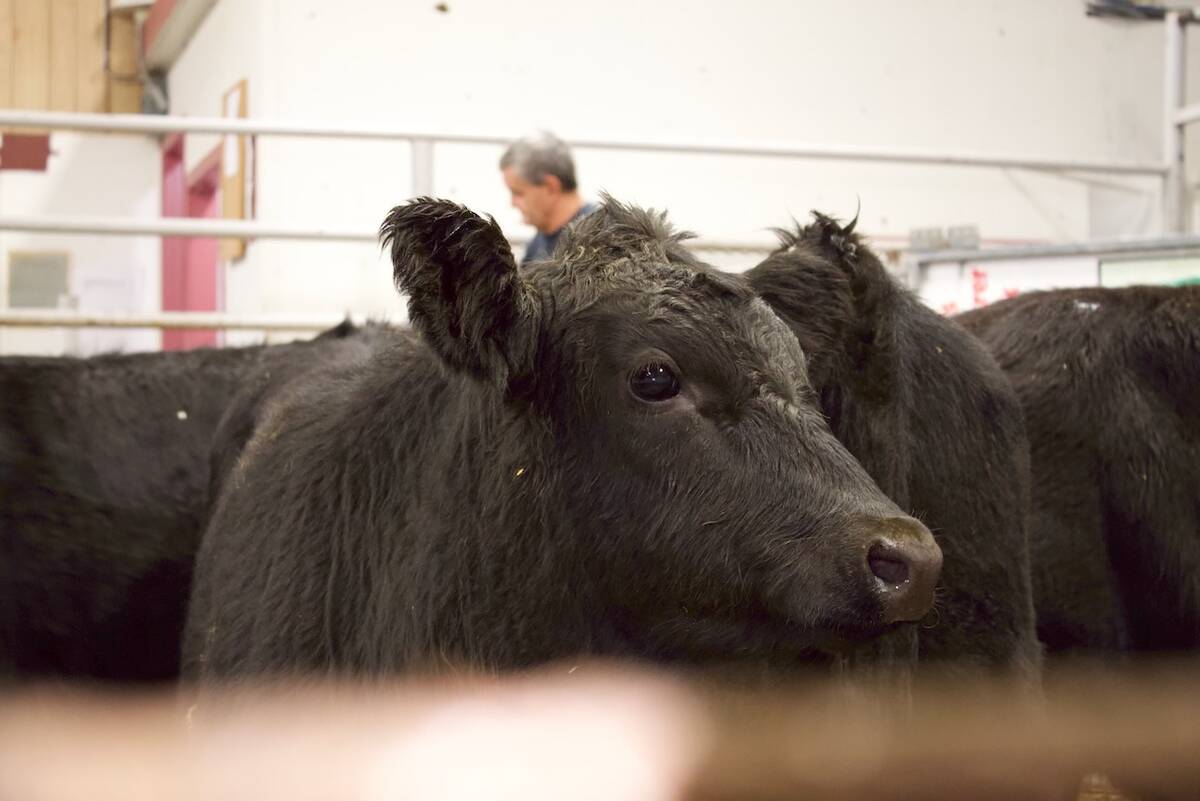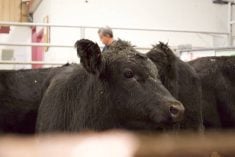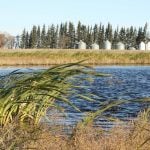As a beef nutritionist, I take a practical approach to formulating overwinter cattle minerals: complement macro-minerals of a nearly all-forage gestating cow diet, meet the gestation cows’ trace mineral and vitamin requirements and put it into a package that most cows will easily consume at a constant daily rate. In this way, I have done my job of contributing to a postpartum healthy cow and her lively newborn calf.
My goal in developing such an overwinter beef cow mineral is to achieve adequate mineral status in the cow herd. I believe that many beef cows are in a state of marginal mineral status when they are brought home from pasture. That’s because parts of Western Canada have been affected by reoccurring drought in 2023, in which the pasture grasses were not mineral- or vitamin-nutritious.
I just reviewed a series of lab analyses from pastures under drought conditions, in which their phosphorus (P) levels are 0.10 per cent compared to last year’s rainy profiles of 0.22 per cent. Given an average early-gestation cow requires about 0.35 per cent P on a dietary daily basis, it is unlikely that this year’s cow meets her total phosphorus requirement without some type of overwinter supplementation. To compound this problem, many producers did not provide any commercial mineral/vitamins on pastures, because they say that their cattle wouldn’t eat enough of it on hardened grass.
Read Also

Cattle market grinds lower in December
Fed cattle suppliers are weighing on cattle markets across North America and that’s meant lower beef markets.
I am working with a 200 cow-calf producer who was severely impacted by the dried-out pastures during this past grazing season. Plus, many of his cows were treated for foot rot due to soft hooves, despite standing on hard drought ground. Yes, he did feed trace mineral salt blocks on pasture, but felt that his cows didn’t draw much benefit from them.
In developing his new overwinter 22:7 beef cow premix, our plan is to first build the mineral/vitamin status of the cows by respectively supplementing their early- and mid-gestation TMR, which is fed in a big holding area adjacent to his farm. It is made up of low-quality “prairie wool” forage and supplemented with three pounds of corn dried distillers’ grains that will be fed during the first couple of months of winter. About Christmastime, the cattle will be moved onto open cornfield grazing until they are ready to calve at the end of February.
This 22:7 beef cow premix will be provided at the rate of three to four ounces per head per day in loose form, poured into plastic three-compartment feeders mounted on old tractor tires. They will be near waterers accessible by the grazing cornfields. Although this premix is well-balanced for this case, I am focusing on four areas of its mineral/vitamin nutrition in particular:
- Calcium (22 per cent). It is high in legumes, moderate in grass, but low in low-quality forages and notoriously low in corn plants. This producer had previous issues with milk fever when he started cornfield grazing a few years ago. This problem was solved with heavy calcium supplementation.
- Phosphorus (seven per cent). Grains are high in phosphorus but low in drought-stressed crops. Our calculations dictate that supplementing about seven to nine grams of P will help meet this macro-mineral requirement of gestating cows until calving. We also supplemented magnesium in the same way.
- Copper (3500 ppm). This region of Manitoba is low in copper in both forages and soil. In addition, they also contain high levels of molybdenum (plus high water-sulphates) that may render copper unavailable to cattle. Therefore, I add copper in highly bio-available chelated form. Plus, I formulated zinc-methionine into the premix at four gram/ hd/d to harden hooves against foot rot.
- Vitamin A (700,000 iu/kg). A gestating beef cow needs about 70,000 iu of vitamin A per day for meeting basic needs, producing colostrum and helping with post-calving issues. Elevated levels of Vitamin E in this mineral (3500 iu/kg) also assists in these areas of cow nutrition.
This is a well-balanced beef cow mineral that I am confident fits the mineral/vitamin part of these cows’ overall overwinter feeding program. Yet just because this mineral looks good in the mineral feeder, the producer and I also want to be equally confident that his cow herd will eat it. That’s is why we added a bit of garlic oil, corn distillers’ grain and about 10 per cent salt to its formula. In addition, he will monitor their mineral intake throughout the winter and we will make changes to its formula when necessary.
















